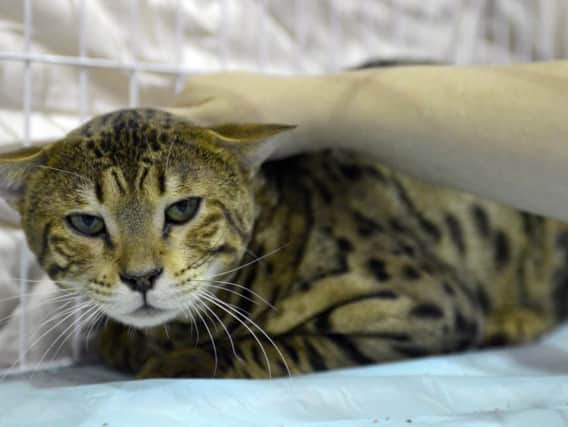Someone in Leeds is keeping a 'dangerous' big cat as a pet


An information request sent to Leeds City Council has revealed that the only animal kept using a licence is a single Savannah cat, living somewhere in the city.
The cat is currently the only dangerous wild animal in the city kept domestically under a licence under the terms of the Dangerous Wild Animals Act 1976.
So what exactly is a Savannah cat?
Advertisement
Hide AdAdvertisement
Hide AdSavannahs are cats which originate in North America and are a cross-breed between domestic cats and servals – an African wild cat species.
They tend to have tall, slim builds with large, rounded ears; very long legs; fat noses, and hooded eyes, along with spotted markings similar to a cheetah.
Most Savannahs tend to weigh between eight and 20 pounds.
Why are they considered dangerous?
Cat expert and founder of the British Big Cat association Danny Bamping believes the Savannah’s classification has more to do with the cat’s breeding than its behaviour.
He said: “It’s on the list because it is a hybrid between a domestic and wild cat.
Advertisement
Hide AdAdvertisement
Hide Ad“They are similar to a Bengal leopard cat, but their markings make them look more like a cheetah.
“They are not a threat to humans, and you can treat it more or less like a normal cat – but it is semi-feral, so it could come back with pheasants and rabbits if you let it out!
“But I would have thought its owners would have it in a controlled enclosure.”
What if I want to keep a dangerous wild animal?
Anyone who wishes to keep certain animals as domestic pets must obtain a licence from the local authority – in this case, Leeds City Council. It costs £75 to obtain a new licence and needs to be regularly renewed.
Advertisement
Hide AdAdvertisement
Hide AdTo obtain the licence, there are a number of criteria which must be met in relation to accommodation and security measures you have in place.
The act does not apply to any dangerous wild animal kept in a zoo, a circus or a premises licensed as a pet shop.
What other animals are covered under the act?
Obviously the entire fauna of planet Earth is rather varied, but the act effectively provides a list of all creatures that require a licence.
Marsupials on the list include Tasmanian devils, kangaroos and wallaroos.
Advertisement
Hide AdAdvertisement
Hide AdIt includes a large number of primates, including spider monkeys, baboons, macaques, mandrills, chimpanzees, bonobos, orang-utans, gorillas, gibbons and certain types of lemur.
Wolves, jackals, bush dogs and dingos are also on the list, while other felines include bobcats, cheetahs, jaguars, leopards, lions, lynx, pumas, servals and tigers.
Other animals which require licences to keep at home include elephants, aardvarks, walruses, rhinos, hippos, giraffes, alligators, crocodiles and camels.
What happens if you keep a dangerous animal without a licence?
Advertisement
Hide AdAdvertisement
Hide AdLeeds City Council’s website states that anybody found guilty of keeping an animal covered by the 1976 act without a licence or anybody found guilty of failing to comply with any licence condition shall be subject to a fine of up to £2,000.
Where a person keeps an animal without a licence or where a person fails to comply with a licence condition, inspectors from the council may seize the animal and may either retain it or have it destroyed or disposed of (to a zoo or elsewhere) without compensation to the owner.